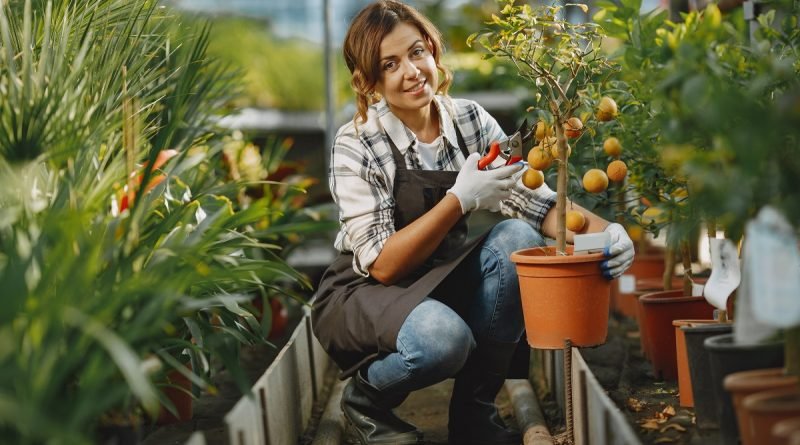How to Start Growing a Terrace Garden in Bangalore?
Terrace gardening is a trending concept in India and for cities struggling with urbanisation, it could be their saviour. Terrace gardening in Bangalore can take off by simply waterproofing your terrace and getting all the gardening basics done. With good planning, you could have your own fresh and healthy produce within months. Here’s how to start growing a terrace garden in Bangalore!
Soil and Climate Requirements For a Terrace Garden in Bangalore
Climate For a Terrace Garden in Bangalore
Bangalore is a city enjoying the tropical savanna climate with a typical dry and wet season. The city is located at a higher level than the sea, giving it a moderate climate throughout the year. However, despite having pleasant weather, you need to be aware of the current seasons to grow certain plants in your terrace garden so that plants don’t die.
- Maximum temperature in Bangalore: 35℃
- Minimum temperature in Bangalore: 15.1℃
Soil For a Terrace Garden in Bangalore
The Bangalorean soil ranges from fine, red, clayey, and loamy soil to red laterite. Plants like castor seeds, groundnut, green gram, Bengal gram, and red gram thrive well in red soil due to their rich iron content. Red soils usually require additional care to make them suited for all kinds of fruits and vegetables.
For nutrients in red soil, you could use homemade compost and organic fertilisers to nurture your green babies. Animal manure, dried leaves, and kitchen waste could go right into your terrace garden pots as nutrients for your plants. A good potting mix will help in keeping the soil well-drained and moist to enable sufficient air circulation.
Effective Watering Techniques for a Terrace Garden in Bangalore
Here are some key elements you need to be aware of while quenching your terrace garden’s thirst:
- Overwatering could hinder the root’s aeration process and let the soil completely absorb its water content before watering.
- Use a mug and a bucket to water your plants so that there is some water control.
- Except for toilet water, all kinds of water can be reused as water for your plants.
- Guess what, even sambar, excessive buttermilk etc. can also be used to water your plants.
- You may add grass, dry leaves, waste paper, and other biodegradable waste to your terrace garden pots to reduce evaporation.
- Granules such as polymers or mixing water-holding gels in the potting mix save you from frequent watering as these gels release water absorbed by them into the plants when the soil goes dry.
- Photosynthesis will take place effectively if you water them in the morning sun.
- Avoid spraying the foliage to prevent insect and pest infestation or do so in the morning so that leaves can dry throughout the day.
- Water your plants at least twice a day through the summer.
- Water every couple of days throughout the winters.
- During the rainy season, you can leave your terrace garden to nature for their thirst.
What Can You Grow in Your Terrace Garden in Bangalore?
Let’s take a fascinating look at these 56 sundries of herbs, flowers fruits, and vegetables that you can grow on a terrace garden in Bangalore:
| Vegetables |
| Annual | Perennial |
| Beans | Capsicum |
| Beetroot | Chilli Pepper |
| Bitter Melon | Pepper |
| Carrot | |
| Bottle Gourd | |
| Cucumber | |
| Eggplant | |
| Okra | |
| Onion | |
| Peas | |
| Potato | |
| Radish | |
| Spinach | |
| Lettuce | |
| Zucchini |
| Herbs |
| Annual | Perennial |
| Coriander | Ginger |
| Fenugreek | Saffron |
| Garlic | Holy Basil |
| Basil | Thyme |
| Carom | Turmeric |
| Dill | Rosemary |
| Parsley | Mint |
| Curry Leaves | |
| Indian Sorrel | |
| Lemon Grass |
| Fruits | Flowers |
|---|---|
| Strawberry | Petunia |
| Blueberry | Geranium |
| Fig | Begonia |
| Tomato | Lobelia |
| Pineapple | Pansy |
| Cantaloupe | Impatiens |
| Banana | Chrysanthemum |
| Watermelon | Dianthus |
| Currant | Fuchsia |
| Gooseberry | Zinnia |
| Passion Fruit |
How to Start a Terrace Garden in Bangalore?
Before getting your hands dirty, we have brought you the tips, tricks, and requirements for starting a terrace garden in Bangalore:
- Yor terrace must have plenty of sunlight as well as some shady spots. You could opt for some shady nets.
- Water must be easily accessible to water the plants as well as clean the area.
- Get enough poles or trellis for climbers and creepers.
- Gather all your gardening tools like hedge shears, shovels, wedges, spades, and gloves.
- Remember to cut branches and leaves, prune or trim, and mix soil.
- Get to know your plants and whether they need a small pot or a huge container. Here are the container sizes for climbers, short vegetables, and perennial plants:
| Climbers | Leafy, short vegetables | Perennial plants |
| 2 ✕ 2 ✕ 1 feet | 6 to 12 inches deep | 5 to 6 feet deep |
The Bottom Line
To avoid animals and birds from your terrace garden you could build a garden shade or a fence with mesh wire. Plant flies, mealybugs, and ants could be your plants’ uninvited guests which can be avoided by using some organic pesticides like
- Tobacco Spray
- Chrysanthemum flower tea
- Onion and garlic spray
- Eucalyptus oil
- Cayenne pepper
- Citrus oil
- Mineral oil
- Salt spray
- Neem
FAQs
- Is it safe to have a terrace garden?
The convenience of fresh, healthy, green, pesticide-free, and safe vegetables and fruits is of great importance in a bustling city like Bangalore. A terrace garden can be conducive to being close to nature, clean air, and regular physical exercise. These gardens also increase the amount of oxygen in the air which means cleaner air to breathe and reduced noise pollution.
- What kind of plants can be grown in a terrace garden?
Here are the top 10 plants that you can grow in a terrace garden:
- Areca Palms
- Arabian Jasmine
- Croton Petra
- Ficus Microcarpa plant
- Ixora plant
- Hyacinth
- Marigold
- Aloe Vera
- Bougainvillaea
- Syngonium
- What are the disadvantages of a terrace garden?
There are some challenges to setting up a fruitful terrace garden:
- The terrace must be waterproof to prevent any leaks by providing some slopes so that water does not stay stagnant.
- Wind protection is a necessity as high-speed winds could damage the plants.
- Frequent cleaning and maintenance will be required to deal with the shedding of dry leaves.
- There are chances of insect or pest infestation.




